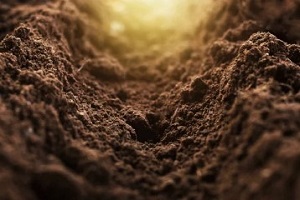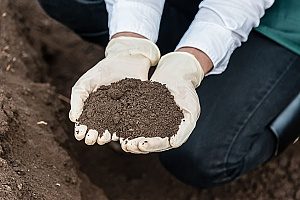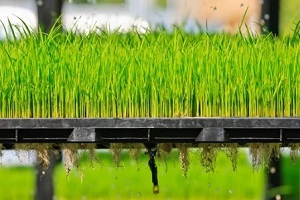 When it comes to growing plants, there is one type of soil that gardeners prefer above all others: loam soil. What makes this soil so desirable for a thriving garden? Here is a look at everything you need to know about loam soil.
When it comes to growing plants, there is one type of soil that gardeners prefer above all others: loam soil. What makes this soil so desirable for a thriving garden? Here is a look at everything you need to know about loam soil.
What Is Loam Soil?
Loam is soil that contains a balanced blend of silt, clay and sand. The way these differently sized particles work in conjunction with another, combined with its mineral content, are the main reasons this soil is ideal for growing plants.
Here is a look at how each of loam’s main components contribute to its superior environment for plant growth.
- Clay: The clay in loam helps hold water in the soil. In addition, its negative charge helps it to attract positively charged nutrients, such as magnesium, calcium, potassium, iron and phosphorus.
- Sand: Sand’s larger grains help prevent soil compaction, enabling oxygen to reach the roots of the plants and helping it drain adequately. Moreover, sand has extra space between its particles, which attracts microorganisms and worms.
- Silt: Silt helps the clay and sand in loam to mix together. It is also the ideal environment for decaying organic matter and microorganisms. In addition, it helps loam hold moisture.
All three of these particles are present in roughly equal amounts in loam.
The Benefits of Loam Soil for Growing Plants
Here is a look at some of the top reasons loam is superior soil for plant growth.
It Has a High Capacity for Holding Nutrients
The essential mineral nutrients that plants rely on to grow are mainly derived from the soil surrounding them. The clay particles found in loam soil boost its ability to hold onto nutrients and prevent them from washing away from the root area. Their high surface volume provides plant nutrients with a place to latch onto.
It Allows for Optimal Root Aeration
Loam soil has the right amount of space between particles to supply a plant’s roots with oxygen. While the parts of the plant that sit above the ground can photosynthesize and create their own oxygen to break down sugars to grow, roots cannot do this and must rely on the soil to supply them with oxygen.
The many spaces between particles in loam mean that plenty of air and water can be held there to provide roots with nourishment. Without this aeration, the entire plant would be in jeopardy.
It Has an Open Structure
Another big benefit of loam is its texture. While some types of soil can form hard clods or horizontal plates that roots struggle to grow through, loam provides the optimal texture. It also gives soil organisms places to live and thrive. Bacteria, protozoa and fungi, which help decompose organic matter and recycle nutrients, do well in loamy soil’s open structure.
How to Tell if Your Garden Has Loam Soil
The most accurate way of determining if your soil is loam is by taking a sample to a lab for a scientific soil test. However, you can get a very good idea of the type of soil you are working with by carrying out a simple squeeze test. Grab a handful of moist soil from your garden and form it into a ball using your hand. If it is loam, it should compress nicely into a loose ball that can be crumbled easily.
If you are unable to form it into a ball, your soil’s sand content is too high. If, on the other hand, you can form it into a very dense and hard ball, you are likely dealing with soil with high clay content.
Creating Loam for Your Garden
Because loam is a combination of silt, sand and clay, many people believe that adding more of whichever material their soil lacks – such as adding sand to soil that is mostly clay – will create loam. However, the proper way to improve your soil and give it the properties of loam is by adding generous amounts of organic matter to it. This will nurture your soil organisms, and over time, they will turn your existing soil into a loamy mixture.
This is an ongoing process that entails incorporating plenty of organic matter into your soil each year. As this organic material decomposes, it will give the soil the superior draining qualities needed to support growth. At the same time, it will attract the beneficial organisms needed to keep the soil alive and healthy.
Some of the organic materials that can be used to create loam for your garden include finished compost, shredded leaves and straw. However, it is important to keep in mind that organic matter depletes quickly as it decomposes. That is why soil should be amended each season.
The amount of organic matter that should be added to your soil to create loam depends on its existing qualities. For example, soil that has a very high proportion of clay or sand typically needs to have large volumes of organic matter added to it a few times per season.
Most soils, however, will do well with a layer of organic matter that covers around two inches of the garden’s surface; this should be worked into the top few inches of soil. One good approach is collecting fallen leaves in fall and shredding them to add to garden beds, where their decomposition will work to enrich the soil.
Purchasing Loam Soil
 You can also purchase loam soil in bulk to give your garden a head start. However, this can be a very expensive undertaking. Moreover, the lack of standards when it comes to certifying soil make it challenging to find high-quality soil that is appropriate for gardens.
You can also purchase loam soil in bulk to give your garden a head start. However, this can be a very expensive undertaking. Moreover, the lack of standards when it comes to certifying soil make it challenging to find high-quality soil that is appropriate for gardens.
Be sure to purchase your gardening soil from a reputable company that can explain where their soil comes from and is willing to stand behind their products.
Reach Out to Dirt Connections for Your Northern Virginia Soil Needs
If you are looking for the ideal soil for gardening, contact the soil experts at Dirt Connections. We offer high-quality soil delivery throughout the Northern Virginia area and will work with you to ensure the soil we provide meets your needs.
Summary

Dirt Connections was started with one goal in mind: providing quality residential and commercial construction services to clients on time and on budget. Reach out for more information on how we can support your next project.
For your convenience our estimates are free and by appointment. Call 703-940-9949 for a free estimate today!











































